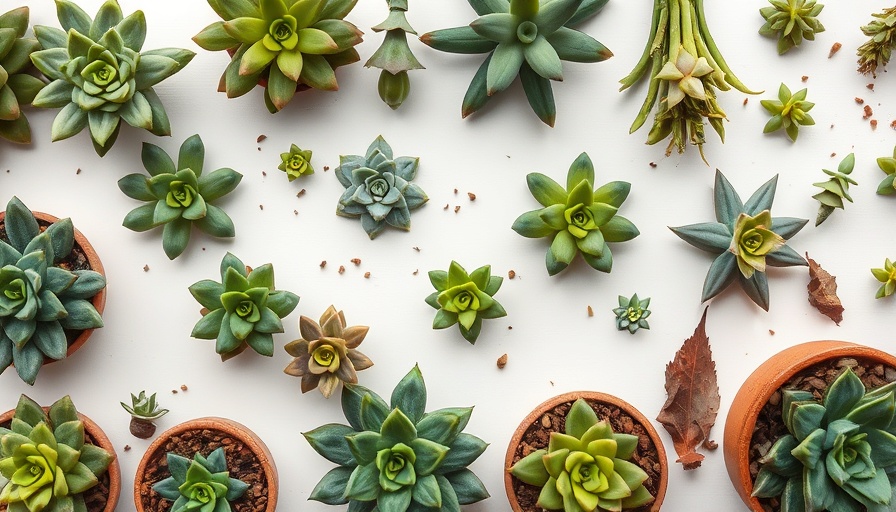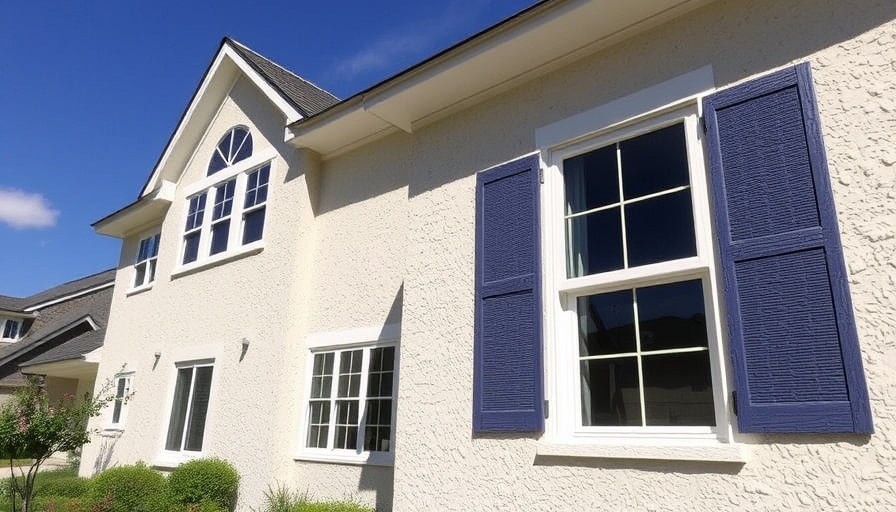
Unlocking the Joy of Succulent Propagation
For plant enthusiasts and busy home gardeners alike, succulents have carved out a special niche as low-maintenance yet delightfully rewarding houseplants. If you’ve ever wondered how to expand your succulent collection or share the joy of gardening with friends, succulent propagation is an engaging and straightforward way to do just that. This process turns your existing plants into new life, all while providing valuable lessons in patience and plant care!
What is Succulent Propagation?
At its core, propagation is the method of reproducing new plants from parts of existing ones. With succulents, this can happen in multiple ways—be it through leaves, stems, or even roots! Methods such as water or soil propagation allow you to witness firsthand the growth of new roots. And did you know that even the air can be used for propagation? It’s true! Once new plants have established roots, they can be potted just like their parent and nurtured into thriving, independent plants.
Best Time to Propagate Succulents
The ideal time to propagate succulents is during their active growing season in spring and summer. While propagation can technically be done any time of the year, working with these seasonal rhythms often yields the best results. For example, if you've got a leggy succulent stretching awkwardly for sunlight, it might just be the perfect candidate for propagation!
Exploring Propagation Methods
Succulents are widely loved because they can be propagated using a variety of techniques. Here are a few popular methods:
- Leaf Propagation: Gently remove leaves and allow them to callous before placing in soil or water.
- Stem Propagation: Cut a stem and place it in soil or water, where it can sprout new growth.
- Root Propagation: You can start fresh growth from roots remains if stripped down to the root.
Each technique has its unique charms and offers specialty zones for growth that cater to different succulent varieties.
Grow More Than Just Plants
Beyond simply growing more plants, propagation nurtures a deeper appreciation for the gardening process. Watching roots develop and new shoots emerge is akin to witnessing tiny miracles of nature unfold in your home. It’s a gratifying activity that just may inspire budding botanists around you!
Final Thoughts on Growing Succulents
Whether you're a seasoned succulent lover or just starting your journey, trying your hand at propagation can be an exciting venture. Not only can you expand your plant family joyfully, but you can also share the gift of greenery with others. So grab those pots, get pruning, and embark on your succulent propagation journey!
 Add Row
Add Row  Add
Add 




Write A Comment